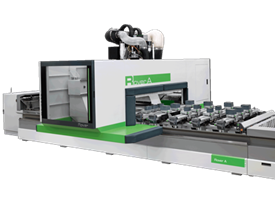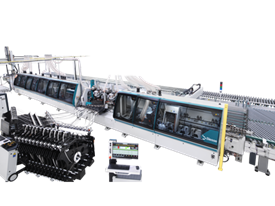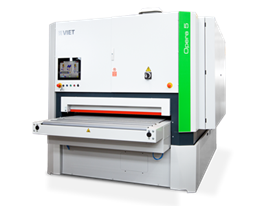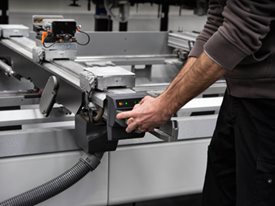All manufacturing procedures nowadays must achieve three key goals: raising output, cutting waste, and improving quality. These objectives are attempted to be met using techniques like 3D printing, sheet forming, injection moulding, and laser and plasma cutting while also reducing costs & production times and boosting efficiency & sustainability.
Metal, composite, marble, granite, ceramic tile, glass, linen, food, leather, rubber, nylon, wood, explosives, and other materials can all be sliced using a water-jet machine. Fabric cutting cannot be done using a water jet cutter, however, this cutter is being investigated.
You may wonder what is water jet cutting machine is and how it works? This blog is a comprehensive guide to explain the purpose, mechanism, types, and benefits of using a water jet cutting machine in furniture manufacturing.
What is water jet cutting machine?
Using an extremely high-pressure jet of water or a combination of water, a jet cutter is a piece of industrial equipment that can cut a wide range of materials. Commonly, the cutter is attached to a high-pressure water pump, where the water is pumped out of the nozzle and sprayed at the material at a high speed to cut through it.
The utilisation of lower pressures, extremely high material removal rates, and less expensive equipment are benefits of this kind of system. The slurry method is more frequently utilised for rough cutting procedures where a high rate of material removal and cool cutting are necessary due to its less exact nature.
In a mechanical process called waterjet cutting, the material is taken out by physical contact and material wear. The key distinction between this cutting method and others is that it is a cold-cutting method (non-thermal), which means that no heat is applied during the cutting process.
How water jet cutting machine works?
To explain how water jet cutting machine works in layman’s terms could be quite difficult but we have nailed it!
An extremely thin jet of pure water or a water-abrasive mixture is driven at high speed through a tiny hole in an industrial sapphire or diamond to execute the cutting process. Pure water jet cutting and abrasive water jet cutting are the two different types of water-jet cutting techniques.
At the stream's departure, an entrained system pressurises the water and draws abrasive particles in. Abrasive is injected into the thin stream of water as it exits the gem. The abrasive particles are accelerated by the water jet, allowing them to cut through considerably harder materials.
Water and abrasive are combined in an abrasive slurry system before the water is compressed. It takes some time for the abrasive jet stream to cut through the material because it uses particle erosion to operate.
Good tolerances and surfaces are produced via abrasive water-jet cutting, however, the cuts are somewhat conical. The abrasive water jet is a tried-and-true technique that works well as a substitute or addition to laser and plasma cutting.
Types of Water jet cutting machine
Abrasive Waterjet cutting
Water is combined with abrasive substances to cut tougher materials. Just before the abrasive jet leaves the system, this takes place in a mixing chamber inside the cutting head. For abrasive waterjet cutting, garnet, suspended grit, and aluminium oxide are common materials. The hardness of the used abrasives should rise together with the material thickness/hardness.
The correct abrasives can be used to cut a variety of material kinds. Ceramics, metals, stones, and thick polymers are common materials that are cut with abrasives. There are several exceptions, though, including tempered glass and diamonds, neither of which can be cut with abrasive water. When a water jet is used to cut glass, the glass will shatter.
Pure waterjet cutting
Water jet cutters can also be used to cut soft materials without the use of abrasives. A mixing chamber or a nozzle is absent from a waterjet cutter made specifically for this use. To make accurate cuts on the workpiece, a high-pressure pump pushes pressurised water out of an aperture. Although both techniques can be used with the majority of industrial cutting instruments that utilise waterjet technology.
Comparatively speaking, the pure waterjet cutting procedure is less invasive than abrasive waterjet cutting. Additionally, the jet stream is incredibly fine and exerts no additional strain on the workpiece. Softer materials including foam, felt, wood, rubber, food, and thin plastics are perfect for pure waterjet cutting.
Features
- A computer-controlled water jet cutter uses water or a water mixture to cut fabric.
- To cut fabric, specialised software is employed.
- A water jet intensifier pump produces steam with a very tiny diameter and a very high velocity (60,000 lb/square inch).
- A sturdy instrument and sharp knife, the high-pressure jet can be used to cut textiles, lathers, and plastic items with ease.
- The momentum and cutting ability of the jet decreases as it penetrates consecutive plies in a spread. The bottom layers of fabric cutting will be wider and less efficient as a result.
- When cutting the fabric, the jet of water and stray fibres are often captured and drained away by a catcher. It is located near the fabric's base and moves at the same pace and direction as the water jet.
- It is necessary to modify the pressure and radius of the jet in order to increase cutting speed.
Benefits
- It is able to cut thicker pieces: You are not constrained by material thickness while cutting with a water jet, which is one of its main benefits. The thin stock is frequently stacked in layers by operators so that the water jet can cut through multiple sheets at once. The water jet can easily cut through the thin material. With this approach, production time may be shortened and material yield can be increased without compromising cut quality.
- Cutting produces no heat: Cutting parts without generating heat is another exceptional benefit offered by the water jet. When it comes to selecting materials and performing secondary activities, this has a variety of advantages.
- Can cut practically any substance with ease: We've already established that heat and thickness are no restrictions on water jet cutting. Does that imply that practically any material may be sliced by a water jet? The reply is essentially yes. Another virtue of water jet cutting that makes it one of the most adaptable tools in any workplace is its capacity to cut a variety of materials.
- Easy set-up: Before cutting a single chip, some CNC machines require time-consuming setups with intricate fixturing that might take hours to install and calibrate. The water jet, on the other hand, needs very few fixtures and may be put up and operational in a matter of minutes as opposed to hours.
Compared to other techniques, waterjet cutting offers a number of benefits. It is a commonly used method in numerous fields because of its adaptability in handling practically any material while being safe, sustainable, and exact.
However, whenever faster cutting speeds are required, manufacturers tend to favour laser cutting. Although the material thickness must stay within specific bounds and heat exposure must be allowed.
In some circumstances, laser cutting services are more inexpensive than waterjet cutting services because of the increase in speed and decrease in the final per-piece cost of the product. If you understood what is water jet cutting machine, you would be able to make the best choice for your business requirements.



.png)





 Worldwide
Worldwide
 Italia
Italia
 United Kingdom
United Kingdom
 Россия
Россия
 France
France
 中国
中国
 Asia
Asia
 Deutschland
Deutschland
 España
España
 Schweiz
Schweiz
 North America
North America
 India
India
 Australia & New Zealand
Australia & New Zealand
 Türkiye Cumhuriyeti
Türkiye Cumhuriyeti
 Middle East
Middle East
 Brasil
Brasil